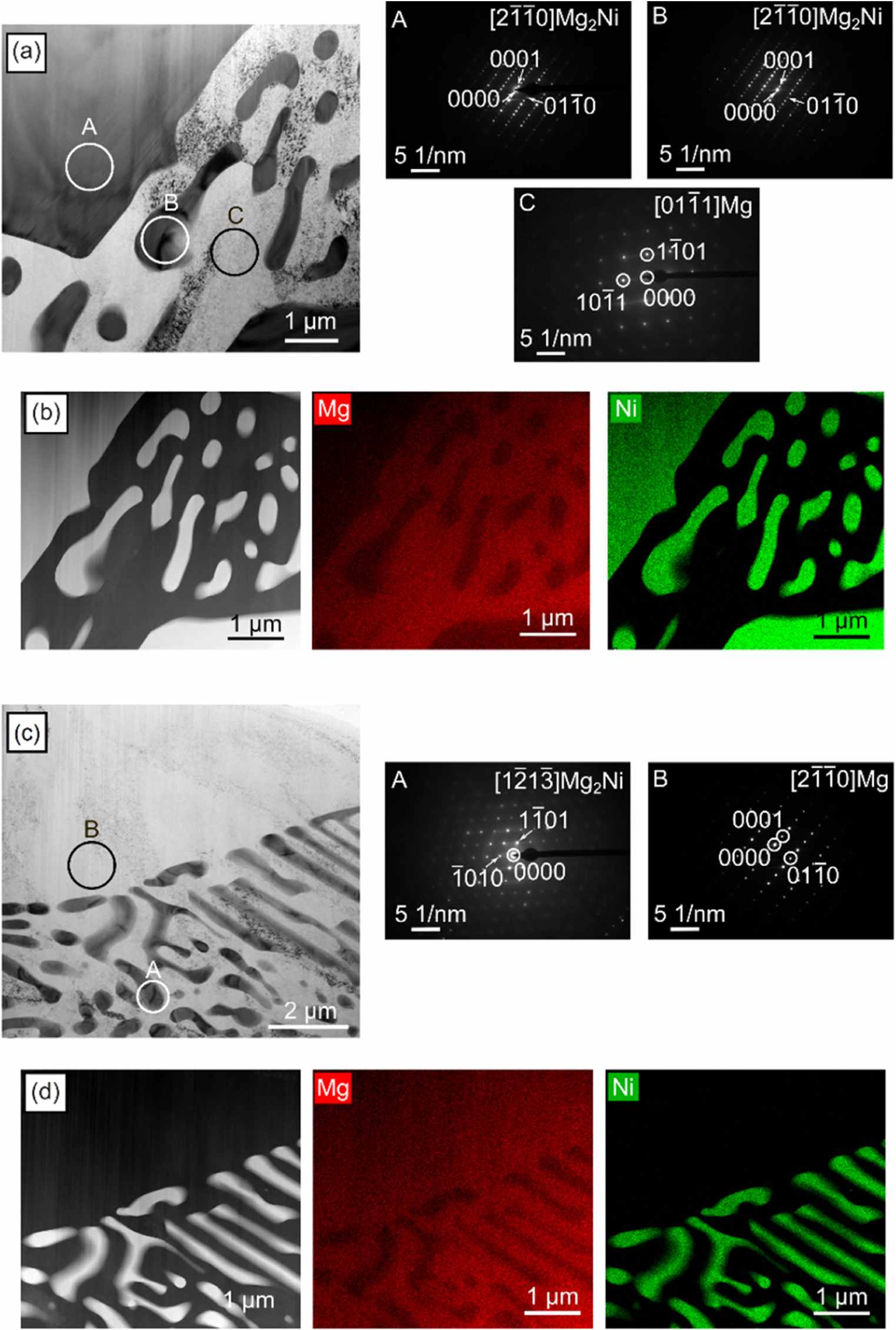The sessile drop method was applied
to the experimental investigation of the wetting and spreading behaviors
of liquid Mg drops on pure Ni substrates. For comparison, the
experiments were performed in two variants: (1) using the Capillary
Purification (CP) procedure, which allows the non-contact heating and
squeezing of a pure oxide-free Mg drop; (2) by classical Contact Heating
(CH) procedure. The high-temperature tests were performed under
isothermal conditions (CP: 760 °C for 30 s; CH: 715 °C for 300 s) using
Ar + 5 wt% H2 atmosphere. During the sessile drop tests,
images of the Mg/Ni couples were recorded by CCD cameras (57 fps), which
were then applied to calculate the contact angles of metal/substrate
couples. Scanning and transmission electron microscopy analyses, both
coupled with energy-dispersive X-ray spectroscopy, were used for
detailed structural characterization of the solidified couples.
It
was found that an oxide-free Mg drop obtained by the CP procedure
showed a wetting phenomenon on the Ni substrate (an average contact
angle θ < 90° in < 1 s), followed by fast spreading and good
wetting over the Ni substrate (θ(CP) ∼ 20° in 5 s) to form a final contact angle of θf(CP) ∼ 18°. In contrast, a different wetting behavior was observed for the
CH procedure, where the unavoidable primary oxide film on the Mg surface
blocked the spreading of liquid Mg showing apparently non-wetting
behavior after 300 s contact at the test temperature.
However,
in both cases, the deep craters formed in the Ni substrates under the
Mg drops and significant change in the structure of initially pure Mg
drops to Mg-Ni alloys suggest a strong dissolution of Ni in liquid Mg
and apparent values of the final contact angles measured for the Mg/Ni
system.
